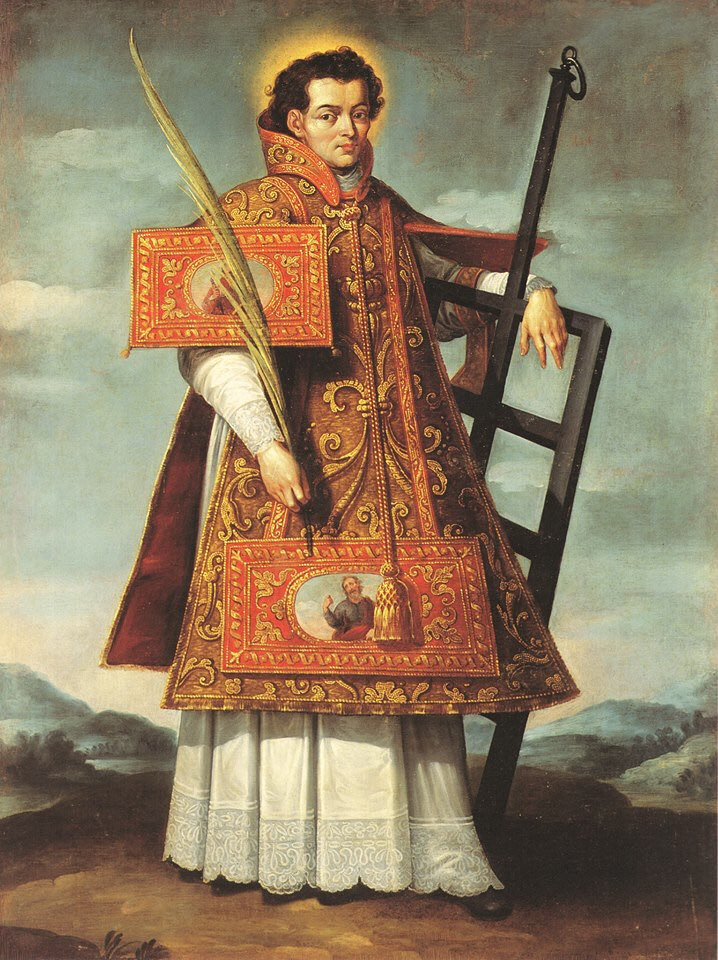The feast of St Lawrence has significance for the resumption of navigation on the Mandovi River. A sandbar develops between Miramar and Aguada during the monsoon season. By August, the sandbar gradually disappears signalling the reopening of the navigable channel

One of the most revered saints in the Roman Catholic Church is Saint Lawrence whose feast is celebrated on August 10. He was born in Valencia, Spain, in the year 225 AD. He had his deacon training in Rome and was ordained in 257. The Roman emperor, Valerian gave the order to capture and put to death every Christian in the year 257, including Pope Sixtus II, bishops, priests, and deacons.
One year after the issuance of this order, Pope Sixtus was martyred. Four days later, Deacon Lawrence was killed as a martyr. Here, I present a brief account of his kind act before he was put to death for defending the Christian faith.
Lawrence's duties as a deacon in Rome included overseeing the Church's property and distributing alms to the needy. Deacon visited the poor, widows, and orphans of Rome when he realised he would be jailed and gave them all the money he had on hand, even selling the altar's sacred items to raise more money. The Roman prefect realised that the Church is wealthy. Lawrence was therefore ordered to hand over the valuables to the Emperor.
Lawrence responded that indeed, the Church was wealthy. "Let me show you a useful component. However, allow me time to assemble everything and do an inventory." After three days, he had gathered a large group of people who were blind, lame, mutilated, leprous, orphaned, and widowed. Lawrence merely stated, "These are the treasure of the Church," when the prefect showed up.
The prefect was so furious that he told Lawrence that he would die—but it would be inch by inches. He had a great gridiron prepared with coals beneath it and had Lawrence’s body placed on it. After the martyr had suffered the pain for a long time, according to the narrative, he made his famous cheerful remark, “It is well done on this side. Turn me over!”
Before he died, he prayed that the city of Rome might be converted to Jesus and that the Catholic faith would spread all over the world. The martyrdom of a saint increased esteem for Christianity in Rome and led to the large-scale adoption of Christianity. His intercession to God is invoked by the poor, sailors, deacons, librarians, archivists, comedians, cooks, and tanners. He is also a patron saint of bankers because of his position as keeper of the treasures of the church and firefighters because of his death by fire. The image of St Laurence is usually depicted with a gridiron to symbolise his martyrdom and occasionally with a purse to recognise the almsgiving that was part of his duties.
Portuguese missionaries brought Christianity to Goa and built numerous churches and chapels. St Lawrence is the patron of Siquerim and Agaçaim villages. The Igreja de São Lourenço em Agaçaim was originally a small chapel constructed before 1541. In 1565, a new church was constructed by the Jesuits which was later expanded. In 1871, the church acquired the bell from the Chorão seminary.
In 1630, under Viceroy Dom Miguel de Noronha, the Portuguese started building São Lourenço Igreja em Sinquerim on the picturesque Sinquerim - hillock, overlooking the Mandovi River and the Arabian Sea. The church was completed in 1636 and entrusted to Franciscans, but after their departure from Bardez in 1776, the Diocesan clergy took control of it. Since 1991, the church has been in the care of the Order of the Minor Capuchin Friars.
The feast of St Lawrence has significance for the resumption of navigation on the Mandovi River. A sandbar develops between Miramar and Aguada during the monsoon season. By August, the sandbar gradually disappears signalling the reopening of the navigable channel. During the Portuguese era, a rope was tied across the river between the Church and Cabo Raj Niwas in Dona Paula. This was cut on the feast day as a sign that the navigation channel is open for ships to pass through. Sailors and fishermen from Salcete come all the way to Sinquerim church to attend the feast. The feast is also celebrated at the chapels in Candolim and Arossim, to name a few.
WHAT THE MARTYRDOM OF ST LAWRENCE TEACHES US
The martyrdom of Saint Lawrence teaches us a lot of things. Always be truthful and evangelise others with the message of the Gospel, whether they are Christians or atheists. We must pursue holiness from the day of our baptism because we are invited to live a life of all-encompassing holiness. There is no place for grouchy Christians on Earth; we must be joyful Christians. Armed with the belief in Christ and His Church, we can defend from those who seek to attack and persecute us. With great confidence and tenacity, we can overcome the obstacles that many of us experience when it comes to religious freedom. We must fight against such oppression and defend our liberty.
As Christians, we are expected to serve as witnesses and follow Jesus on our earthly pilgrimage. While fighting the immorality of contemporary culture, many of us will endure social persecution even though many of us will never be martyred. All pain, whether it is mental, emotional, or spiritual, has the potential to draw us nearer to Jesus, who underwent a great deal throughout his Passion. The culmination of all suffering is glory and resurrection. This has been demonstrated time and time again by martyrs and confessors of Christ: And fear not those who kill the body but cannot kill the soul (Matt 10:28).
(The author is Scientist and a freelancer who focuses on science, social and culture themes)